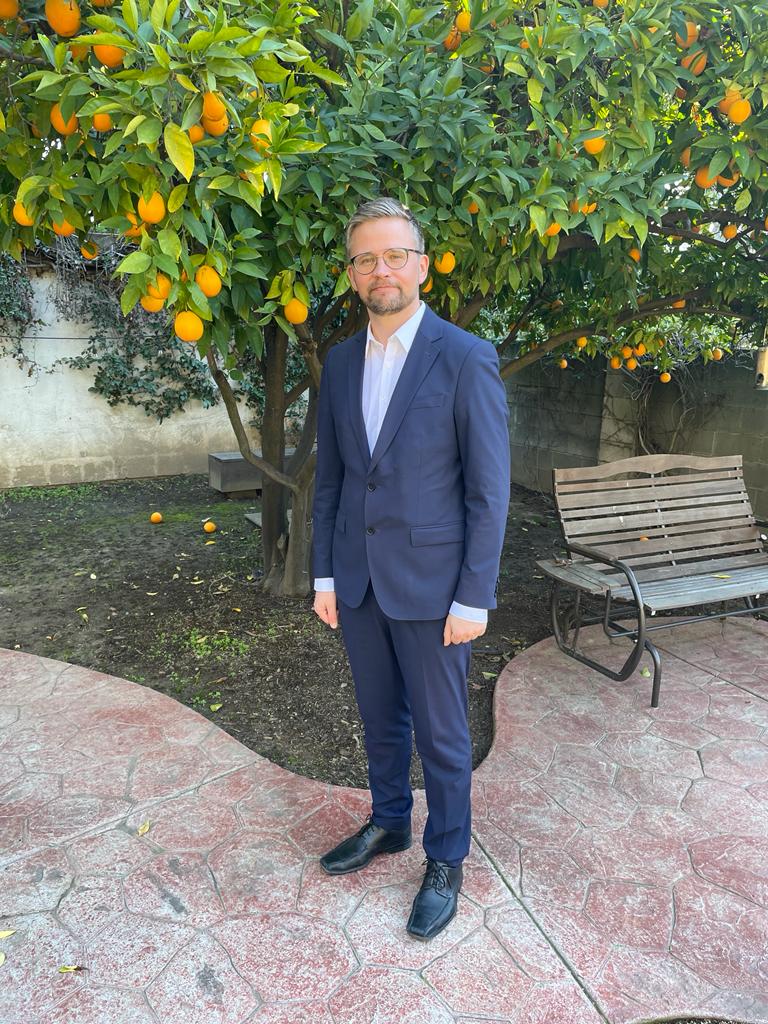Jussi Leponiemi, Key Account Director (ICT) at BusinessOulu, brings us his third report from the United States as he participates in the International Visitor Leadership Program.
After an inspiring time in Washington, it was time to head to the other side of this vast country, as the next meetings were scheduled in Sacramento, California. Our meetings were organized by Global Ties Sacramento, an organization dedicated to connecting international leaders with the Greater Sacramento Region to foster business, cultural, and educational exchanges. Their work is truly outstanding, and special thanks go to Ms. Claudia Ramirez, the international program coordinator. I was thrilled to revisit California from this perspective, considering the state’s reputation as the innovation engine of the world. In many ways, it’s an exceptional place. What key insights can we glean from California regarding small business development and entrepreneurship? Let’s delve into that. It’s important to note that all individuals mentioned in this article have provided their consent.
Utilize the existing tools
I’d like to spotlight one of the numerous meetings, specifically the one with the Carlsen Center for Innovation & Entrepreneurship. During this meeting, Mr. Cameron Law, the Executive Leader, and Mr. Brian Gladden, the Innovation Coach, delivered an inspiring presentation and actively engaged in a discussion with us. They shed light on how this institute, operating under Sacramento State University, is simplifying, making accessible, and promoting innovation and entrepreneurship throughout the region.
The Carlsen Center plays a pivotal role in assisting both students and individuals ranging from 30 to 70 years old in establishing businesses, guiding them from the idea stage to the seed stage. Their diverse range of programs is tailored to meet the varying needs of entrepreneurs, complemented by inclusive and supportive tools designed to foster the growth of the small business community.

They delved into insights about specific tools and programs that prove highly beneficial but might not be widely known on a larger scale, perhaps to all audiences. Among them, Innovation Accounting, Lean Startup, and Lean Canvas stand out. These programs focus on pivoting, customer discovery, and fostering solid and sustainable innovation. In the presentation, we were introduced to the fundamental principles and potential outcomes of these programs when implemented effectively.
What’s notable is that these resources are highly accessible, even for individual entrepreneurs, with books and online materials readily available. Moreover, dedicated consultants can assist in the developmental process. Following the discussions in Sacramento, I strongly recommend taking a closer look at these programs for valuable insights and guidance.
Business back to basics
The program also included meetings with entrepreneurs, and one noteworthy individual was Ms. Anne Staines, the CEO of Sagent Marketing. Her company specializes in providing marketing services with a focus on B corporations, public agencies, nonprofit organizations, and purpose-driven companies. With over 30 years of experience in the field, she shared some highly insightful notes, which I’ll briefly list here as their significance is self-evident:
“I have spent so much money not hiring the best people possible.”
“What are your KPIs?”
“Stop trying to impress each other and actually learn from each other.”
“Pro Bono activities make good business.”

She also underscored the importance of the open vision process, encouraging us to envision what we could achieve if failure were not an option. Following that, she prompted us to identify the actual obstacles preventing us from realizing those visions. Emphasizing systematic work, she conveyed the belief that remarkable achievements are attainable.
In-depth discussions also revolved around collaboration with other businesses, where trust emerged as a central factor. Establishing incentives for all parties involved in a project, coupled with role adjustments from contractor to subcontractor over time, were highlighted as strategies to maintain balance in settings and roles.
Drawing on her current business’s offerings and her wealth of experience, she stressed the significant impact of a company’s positioning. To enable favorable business opportunities, she emphasized the need to position the company strategically. This, she emphasized, requires thorough market research, as market gap analysis can be instrumental in saving both money and the business itself.


Furthermore, some seasoned entrepreneurs emphasized fundamental business principles that, though clear, are often overlooked in today’s fast-paced environment. They stressed the importance of starting with a thorough understanding of a company’s value generation, identifying the target customer, and addressing the core problem. Failure to define these basic elements clearly can result in the misallocation of resources and futile activities.
When strategizing, they highlighted the irreplaceable role of communication and engagement. Advocating for hands-on approaches, they emphasized the need to hit the streets, interact with people, and gather honest feedback. A phrase borrowed from poker, “Learn the fold, the fold is gold,” echoed through these discussions, underscoring the value of strategic decision-making.
The second chapter delved even deeper into business basics, with more insights on the horizon. Stay tuned for further updates!
What is the International Leadership Development Program? Read Jussi’s intro blog to learn more.
